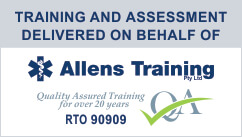Manage First Aid – Heat Stroke
Book an air conditioned course with Simple Instruction at the DYRSL (Dee Why RSL). We have course dates for January, February and March listed on the website. Please go online to make a booking with the best first aid provider on the Northern Beaches, Sydney, New South Wales, Australia and its a big claim but I believe the World.
We provide course in Provide First Aid HLTAID003, Provide CPR HLTAID001 and Childcare First Aid HLTAID004.
Heatstroke
Heatstroke is a life-threatening condition in which the body overheat when it can no longer maintain a healthy temperature. The high body temperature in heatstroke can lead to organ damage. You can avoid heatstroke by taking precautions in very hot weather.
What is heatstroke?
Heatstroke occurs when a person’s body temperature rises from about 37°C to above 40.5°C. It is sometimes called hyperthermia.
Heatstroke needs immediate first aid to lower the body temperature as quickly as possible.
Dehydration and heat exhaustion are milder types of heat-related illnesses.
What causes heatstroke?
Heatstroke is caused by prolonged exposure to heat. You can get heatstroke inside or outside. You can get it exercising in the heat.
You are more likely than others to get heatstroke if you are:
over 75 or very young
pregnant or breastfeeding
overweight
living alone, homeless or lacking social support
working or exercising in hot conditions
affected by chronic diseases such as heart disease and diabetes
taking certain medications.
Heatstroke symptoms
The signs and symptoms of heatstroke include:
rapid pulse and fast, shallow breathing
trouble speaking, concentrating or coordinating movements
confusion, seizures or loss of consciousness
sudden rise in body temperature
hot and dry and possibly red skin, possibly with no sweat
dry, swollen tongue
headache
nausea or vomiting.
Heatstroke treatment
Heatstroke is a medical emergency. If someone has heatstroke call triple zero (000) and ask for an ambulance.
Meanwhile, give the person sips of cool fluid if possible and lay them in a cool shady place.
Lower their body temperature any way you can, for example by:
removing excess clothing
sponging or spraying them with water and fanning the damp skin
immersing them in cool water
placing cold packs under their armpits or groin, or on the back of their neck.
If a person with suspected heat stroke is unconscious, place them on their side with their mouth down (to drain any fluid) and the chin up to prevent possible suffocation.
Do not give aspirin or paracetamol to someone with heatstroke as they may make things worse.
Heatstroke prevention
Heatstroke is linked to dehydration, so in hot conditions:
Drink plenty of water – even if you don’t feel thirsty. Avoid hot or sugary drinks.
Keep cool – try to avoid direct sun. Wear a hat and lightweight, loose-fitting, cotton clothing.
Keep your house cool – close windows, shut curtains and blinds, and use air-conditioning if you have it.
Help others – visit or phone friends, family and neighbours who are more at risk. Keep children cool and give them lots to drink. Ensure pets have plenty of water and shade. Never leave babies, children or animals alone in a car.
Have a plan – know who to call if you need help, and follow your doctor’s advice if you have any medical conditions. Postpone or cancel any activities, or reschedule them to a cooler part of the day or a cooler location.
